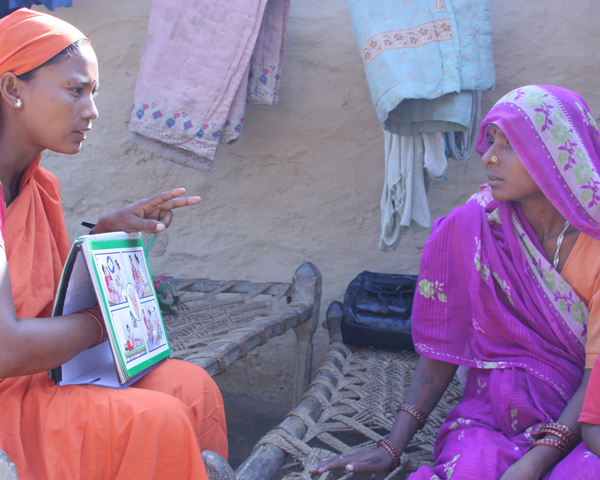 Audiences are more likely to change their behavior when they hear a message multiple times. They are even more likely to change when they hear the message from different sources. But in order for these principles to work, messages must be consistent. All sources must be communicating the same message. Conflicting messages from different projects or individuals will confuse audiences and make it less likely that they will change their behavior.
Audiences are more likely to change their behavior when they hear a message multiple times. They are even more likely to change when they hear the message from different sources. But in order for these principles to work, messages must be consistent. All sources must be communicating the same message. Conflicting messages from different projects or individuals will confuse audiences and make it less likely that they will change their behavior.
SBCC and service delivery partners should harmonize their messages to ensure they:
- Recommend the same action (for example, breastfeed exclusively for 6 months)
- Do not provide conflicting technical information
- Use similar terms and language
Harmonizing messages can be done at various stages and through several methods.
One method, which usually happens at the beginning of an activity or project, is to create a message guide. Several organizations – including SBCC, service delivery and private sector organizations – come together to determine key messages for a topical area (such as malaria). Often there is a message harmonization workshop that helps partners decide the content for the messages, key actions they want the audience to take, benefits the audience will get from taking the action, and support points. Then the group (or a sub-group) develops the draft messages. Sometimes another workshop is held to present and refine the messages. Once all organizations have agreed on the messages, they put together a complete message guide with all the messages and any other relevant information. The message guide is reviewed and updated as necessary. Any organization working in that area can include messages from the guide as they develop communication activities and messages. Click to access sample message guides on pandemic influenza, nutrition and family planning.
If projects have already developed messages and are implementing communication activities, one method is to do a consistency review of existing messages. Service delivery and SBCC partners can gather existing service communication materials and review the key messages given in each material. Partners can create an inventory of key message content and recommended actions, divided by audience. Technical experts can review the messages to ensure they are accurate. Once the inventory is complete, partners meet to discuss messages that are inconsistent, conflicting, or inaccurate. They come to a consensus of what needs to be changed and partners can revise materials and messages. Cost should be considered when discussing changes that need to be made. An example of a consistency review from Guatemala can be found here.

